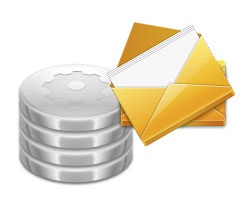What Exactly Is a Blueprint?
In popular parlance, blueprints are technical drawings from which the user can build something. Anything built today is likely to require multiple sets of blueprints, particularly if permits or licenses are involved. Technical drawings can be produced and copied in several ways, ranging from the traditional blueprint process that dates back to the nineteenth century all the way up to “drawings” printed from a computer file.
Traditional Blueprints
Drafters once traced drawings in pen and ink on translucent paper. This was an expensive, labor intensive process, particularly where multiple copies were involved. Modern drafters make initial prints on translucent paper using the output of computer-aided drafting systems. The blueprint is a contact print made by exposing a sheet of bright yellow “blueprint paper”–paper with a light sensitive ferro-gallate coating–through the translucent original. After the exposure, the yellow paper has turned dark blue, except where the white lines where shadows of dark areas fell. The blueprint is then washed and dried. While the wetting and drying could affect the drawing’s scale, for many uses blueprints were and are adequate.
Diazo Prints
Because of the difficulty of making notes on a blueprint’s dark background and the clumsy washing process, the diazotype process became popular in the 1940s. Diazo paper is coated with diazonium salt, a reactant and an acid stabilizer. During the contact exposure, light destroys the salt. The print is then developed in ammonia solution or gas. This leaves blue lines on a white background. Diazo prints have more dimensional stability than blueprints, but they are light sensitive and can fade over time. Beige and brown “sepia prints” are produced by a variation of the diazotype process.
Xerographic Prints
Well-equipped copy shops can produce photocopies of huge drawings, but the process is expensive. Some drafting shops have the equipment to produce these prints in house, but the cost is still high relative to other methods of reproducing a drawing.
Large Format Plotters and Printers
Drawings produced by computers can be printed directly like any other document. The only limiting factor is the size of the printer available and its precision. Printers intended to produce text or photographs may not have the dimensional accuracy needed for final drawings, but they can certainly produce acceptable drafts. For the greatest accuracy, pen plotters are used. Specialized printers and plotters intended for drafting can handle very large prints, using either rolls of paper or single sheets.
Technical drawings can be reproduced in many ways to meet the needs of the user. Whether hand drawn originals, blueprints or diazo prints, photocopies or computer printouts, the “blueprint” is as good as its ability to communicate data to the people who use it.


